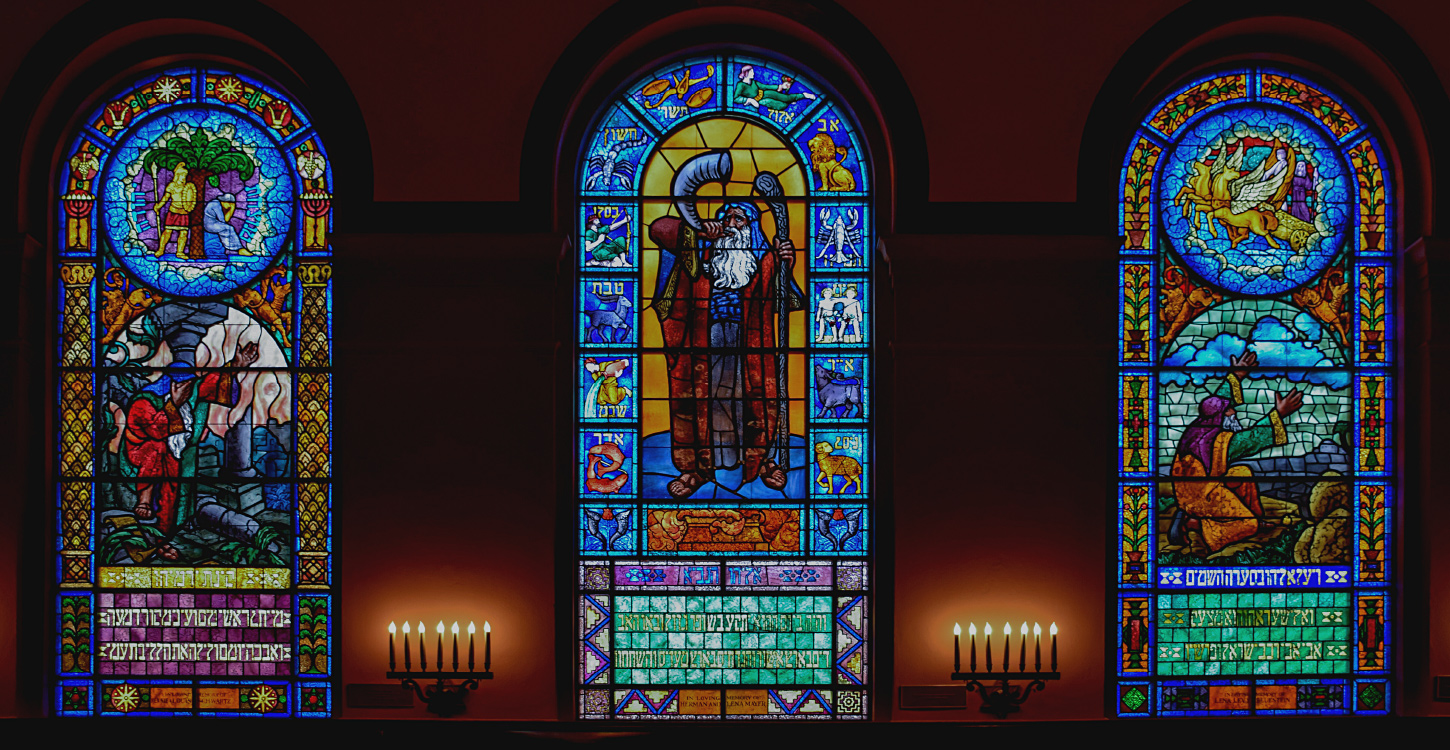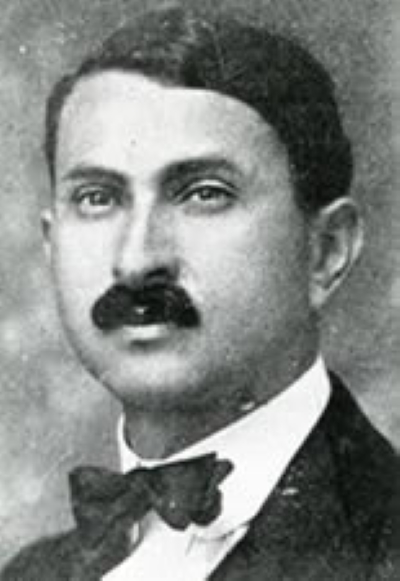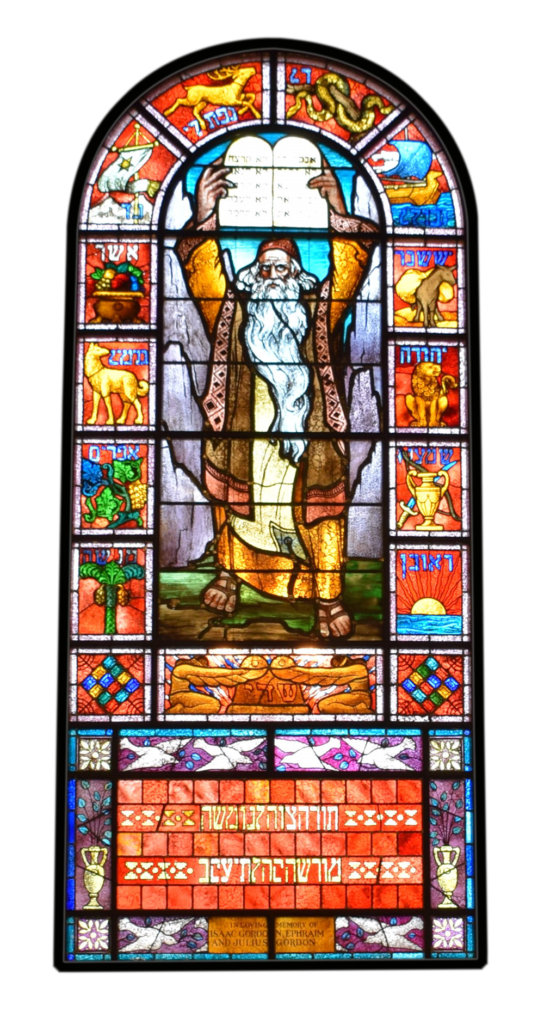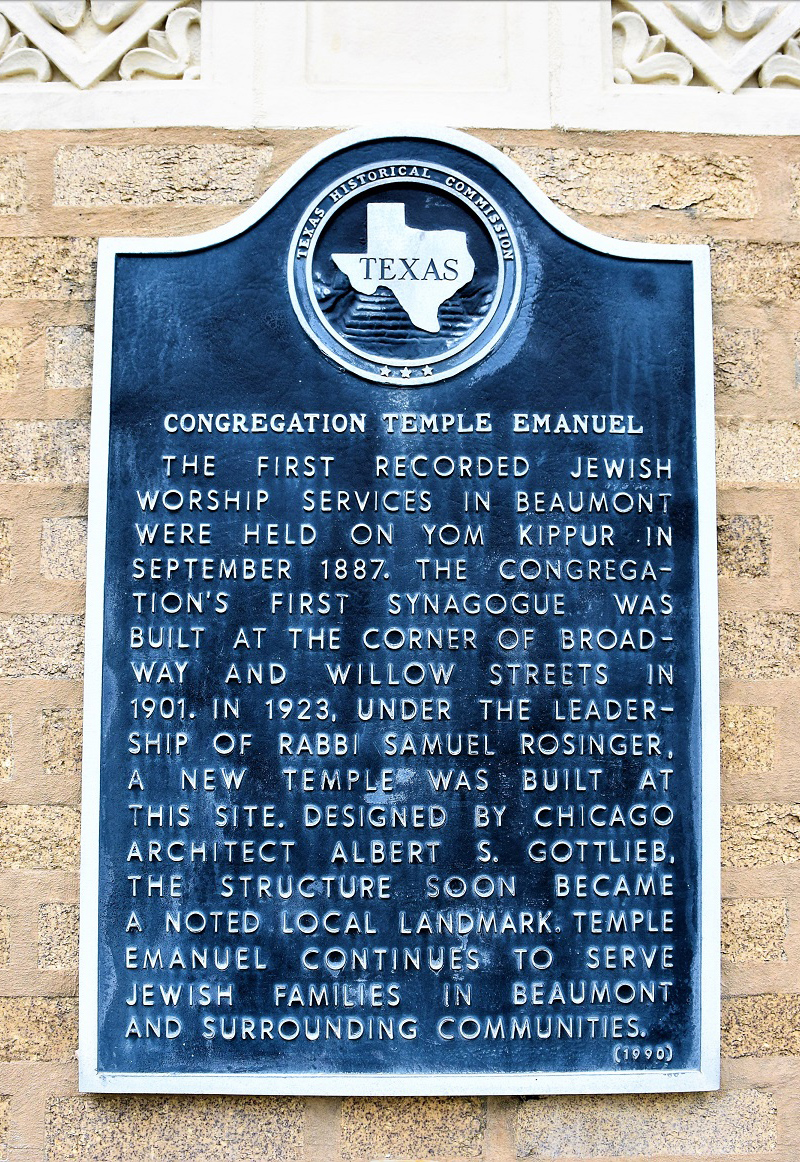But in 1900, the women’s organization of Congregation Emanuel, first known as the Ladies Benevolent Society, led the fundraising effort to build the first synagogue, “a frame building with a high arched roof and turrets. It seated 300 worshipers which was about the number of Jews in Beaumont in 1901.”
After the first synagogue was built, the Ladies Benevolent Society, which had also established “Hebrew Rest Cemetery on land adjacent to Magnolia Cemetery” in 1895, was renamed the Council of Jewish Women. They provided service to the entire town by creating the first circulating library in Beaumont.
In 1901, following Rabbi Levy, was Rabbi Joseph Friedlander. Then, in 1910 Rabbi Samuel J. Rosinger became Rabbi of Beaumont’s Congregation Temple Emanuel and of Southeast Texas.
RABBI SAMUEL J. ROSINGER
Congregation Temple Emanuel advertised for its next Rabbi as follows, ’Rabbi wanted for Congregation Temple Emanuel of Beaumont, Texas. Applicants may be a graduate of Hebrew Union College or the Jewish Theological Seminary. He must be a good mixer.’ Responding to the call was “the young Rabbi Samuel Rosinger of Toledo, Ohio…a native of Hungary (who) had been educated in Switzerland, Berlin, Columbia University, and at the Jewish Theological Seminary. He delivered a trial sermon on August 24, 1910 and was hired two days later. He served the congregation for over 50 years. He was a leader, not only of his congregation, but throughout the community through two world wars, the Great Depression and the years of the Klu Klux Klan influence and intimidation. Rabbi Rosinger did much to establish a feeling of brotherhood throughout the religious community of Beaumont. This is noted by one writer in describing the excitement in town on Armistice Day, November 11, 1918 by telling of a mass meeting at the First Methodist Church where, ‘At the pulpit Rabbi Samuel Rosinger, Father E. A. Kelly, and Rev. Fred Clark, a Baptist, joined hands – an unheard of spectacle almost as astounding as the Big News itself.’
Among Rabbi Rosinger’s many civic achievements were serving as Chairman of the Beaumont Municipal Hospital, President of Rotary Club, and Editor of the Rotarygram for over twenty years. He was designated Rabbi Emeritus in 1960. In 1957 an activity center was added to the East side of Temple Emanuel. The center was dedicated to Rabbi and Mrs. Rosinger. It was under the leadership of Rabbi Rosinger that the present Temple Emanuel was built. When his congregation decided to build a new house of worship, Rabbi Rosinger persuaded his board of Trustees to engage Albert S. Gottlieb of Chicago, an expert on synagogue architecture. Gottlieb designed a handsome house of worship in the Byzantine style capped by an impressive copper dome with the traditional Star of David at its summit. True to the Byzantine style, the sanctuary lies beneath the large rounded dome, while the alter area and the organ and choir loft are located in appendages on opposite sides of the structure. These areas plus four cubicles on the corners of the building buttress the walls which bear the weight of the massive dome. The corner cubicles offer useful space as vestibule and office areas. Broad high entrance steps lead to handsome doorways of walnut.’’
Over the years following Rabbi Samuel J. Rosinger, Beaumont and Southeast Texas have been blessed with continuous Rabbinic Leadership. All the while the legacy of Rabbi Samuel J. Rosinger continues to inspire the membership of Congregation Temple Emanuel and Friends of Temple Emanuel across Southeast Texas.
(FROM Texas Historical Commission Staff, originally written 9/17/1990, revised 10/24/1990 and 1/9/91; based on the research of Mildred Hall, Jefferson County Historical Committee; edited by Temple Emanuel 7/27/2021)




